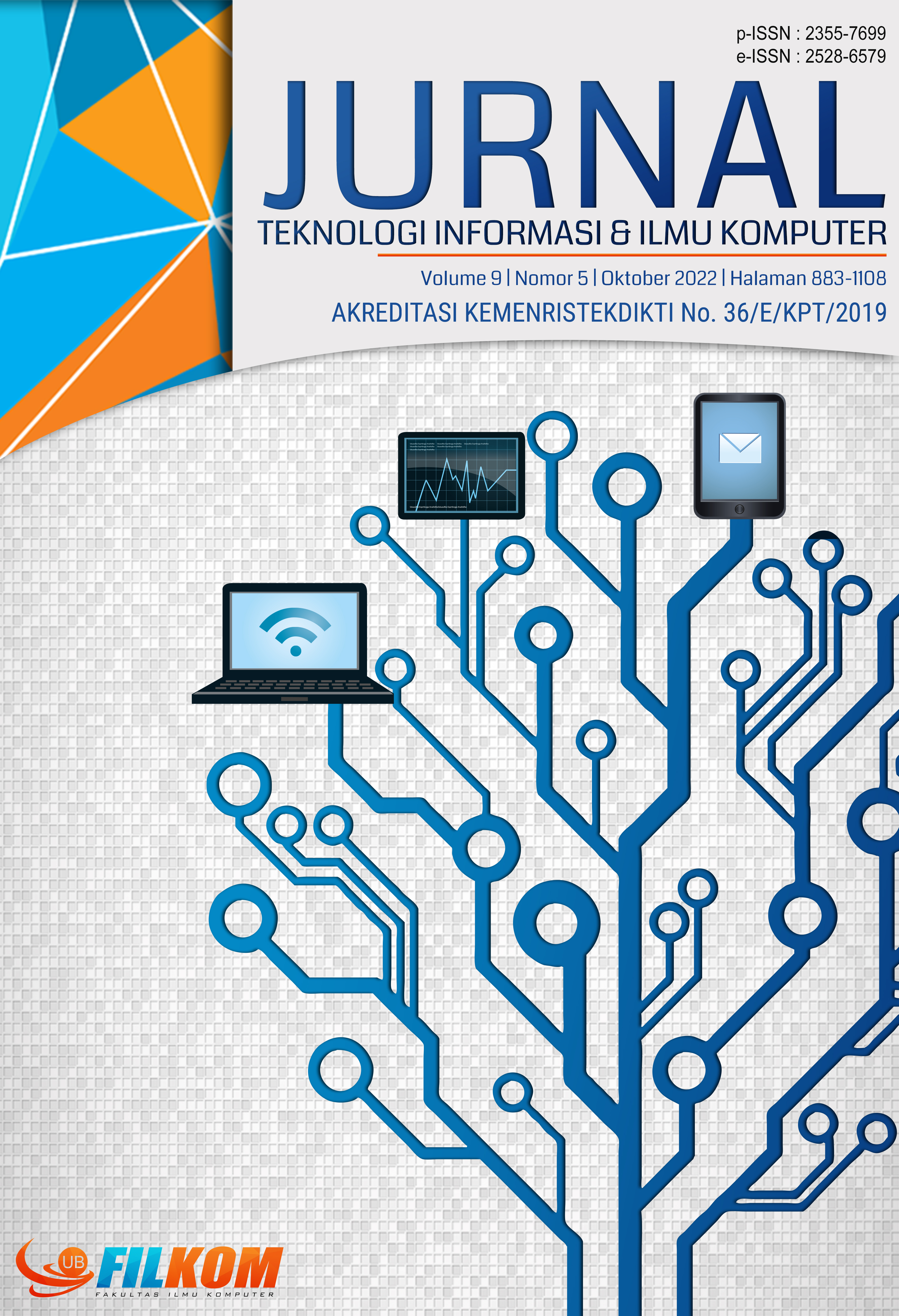Perancangan Data Warehouse Untuk Menunjang Akreditasi Program Studi
DOI:
https://doi.org/10.25126/jtiik.2022954495Abstrak
Akreditasi diperlukan oleh setiap perguruan tinggi sebagai bentuk pengakuan mutu dari pihak eksternal. Dalam proses akreditasi diperlukan data untuk mengisi formulir sesuai dengan standar yang diperlukan. Permasalahannya adalah perguruan tinggi tersebut biasanya memiliki beberapa aplikasi dengan media penyimpanan data yang beragam untuk menjalankan proses bisnis perguruan tinggi tersebut. Akibatnya, dalam penyediaan data untuk proses akreditasi masih dilakukan secara manual dengan mengambil dari berbagai sumber dari berbagai aplikasi sehingga akan memakan waktu yang lama. Diperlukan Data Warehouse untuk melakukan integrasi data sehingga dapat membantu mengelola data untuk menunjang proses akreditasi. Pada penelitian ini digunakan pendekatan Kimball untuk merancang skema data warehouse dalam menunjang akreditasi program studi.
Abstract
Accreditation is required by every university as a form of quality assessment from external parties. In the accreditation process, data is required to fill out forms according to the required standards. In addition, these colleges usually have several applications with various data storage to carry out the college's business processes. As a result, the provision of data for the accreditation process is manually by taking from various sources from various existing applications so that it will take a long time. Data Warehouse is required to integrate data so that it can help manage data so that it supports the accreditation process. In this study, the Kimball approach was used to design a data warehouse scheme to support the accreditation of the study program.
Downloads
Referensi
ALMEIDA, F., 2017. Concepts and Fundamentals of Data Warehousing and OLAP. Portugal: INESC TEC and University of Porto.
C. ULMER, G. B. Y. R. C. D. R., 2010. Exploring data warehouse appliances for mesh analysis applications. s.l., s.n., pp. 1-10.
INDRAJANI SUTEDJA, P. Y. N. K. C. V., 2018. Building A Data Warehouse to support Active. Jakarta, IEEE, p. 461.
INMON, W. H., 2005. Building the Data Warehouse, 4th Edition. Canada: John Wiley and Sons, Inc.
K. C. DAVIS, D. A. S. B., 2016. Scaling Data Warehousing Course Projects. s.l., s.n., p. 241–245.
KAMBER, J. H. D. M., 2006. Data Mining Concepts and Techniques, 2nd Edition. San Francisco: Diane Cerra.
M. A. MOHAMMED, M. M. A., 2014. Data warehouse for human resource by Ministry of Higher Education and Scientific Research. s.l., s.n., p. 176–181.
RALPH KIMBALL, M. R., 2002. The Data Warehouse Toolkit, Second Edition:The Complete Guide to Dimensional Modelling. Canada: John Wiley and Sons, Inc.
RALPH KIMBALL, M. R. W. T. M. B. B., 2007. The Data Warehouse Lifecycle Toolkit, 2nd Edition. Canada: Wiley Publishing, Inc.
SUBA, C., 2018. Data Warehousing Methods and its Application. s.l., s.n., pp. 12-19.
Unduhan
Diterbitkan
Terbitan
Bagian
Lisensi

Artikel ini berlisensi Creative Common Attribution-ShareAlike 4.0 International (CC BY-SA 4.0)
Penulis yang menerbitkan di jurnal ini menyetujui ketentuan berikut:
- Penulis menyimpan hak cipta dan memberikan jurnal hak penerbitan pertama naskah secara simultan dengan lisensi di bawah Creative Common Attribution-ShareAlike 4.0 International (CC BY-SA 4.0) yang mengizinkan orang lain untuk berbagi pekerjaan dengan sebuah pernyataan kepenulisan pekerjaan dan penerbitan awal di jurnal ini.
- Penulis bisa memasukkan ke dalam penyusunan kontraktual tambahan terpisah untuk distribusi non ekslusif versi kaya terbitan jurnal (contoh: mempostingnya ke repositori institusional atau menerbitkannya dalam sebuah buku), dengan pengakuan penerbitan awalnya di jurnal ini.
- Penulis diizinkan dan didorong untuk mem-posting karya mereka online (contoh: di repositori institusional atau di website mereka) sebelum dan selama proses penyerahan, karena dapat mengarahkan ke pertukaran produktif, seperti halnya sitiran yang lebih awal dan lebih hebat dari karya yang diterbitkan. (Lihat Efek Akses Terbuka).















